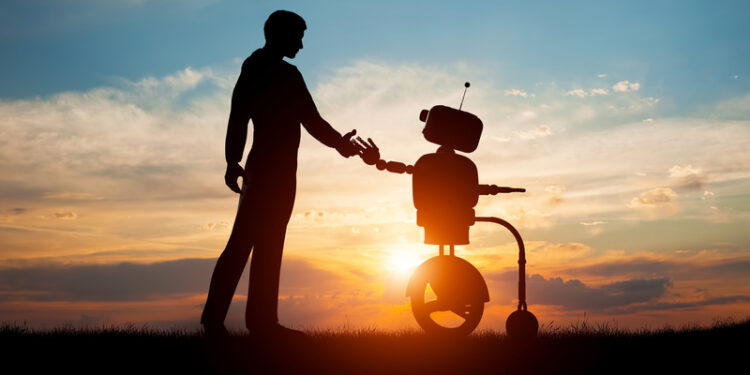Although Isaac Asimov has already raised the three main laws, the European Union has been forced to start creating a regulation because of the speed with which artificial intelligence bursts into our lives.
The artificial intelligence and robotics are surely our closest future. In fact, in many cases it is already a reality that accompanies us day by day. In 1942, Isaac Asimov enunciated in his book Vicious Circle, the three fundamental laws of robotics that would underpin his entire literary universe.
-
A robot will not harm a human being or, by inaction, allow a human being to suffer harm.
-
A robot must obey the orders given by humans unless these orders conflict with the 1st law.
-
A robot must protect its own existence to the extent that this protection does not conflict with the 1st or 2nd Law.
Three laws that have now been augmented or improved by the European Union. Parliament has decided to regulate our future and to this end proposes six laws that normalize coexistence with robots. They are not yet definitive, since this regulation has to go through the European Commission filterbut his main objective is to reduce the impact that will mean the implantation in society of these machines, since one of the greatest effects will be the loss of work.
1. Robots must have an emergency switch
The first thing we have to control is any dangerous situation. The evolution that these machines are having makes Artificial Intelligence can learn due to training, so any dangerous situation that may occur must be avoided with an emergency switch.
2. Robots will not be able to harm humans
Obviously, it is based on the main Asimov’s Law and it completes the first proposal by the European Union. Robotics must always be designed to help and protect humans, so the creation of machines whose purpose is to destroy or harm people will not be allowed.
3. Emotional relationships with robots cannot be generated
Have you seen “The Bicentennial man”? In it, a robot played by Robin Williams remains collaborating with the same family for decades, resulting in close personal relationships between machines and people. If you haven’t seen it, I won’t be the one spoiler for you, but these emotional ties are the central plot of the whole film. Well, the European Union believes that this should not be the case, so it will prohibit creating any emotional relationship with robots. The purpose of this rule is to remind humans that artificial intelligences are not able to feel love for us, so we should not act differently.
Laws of robots.
4. Those who are larger must have compulsory insurance
Not all machines will be the same or have the same characteristics. Nor can they all perform the same activities. It is clear that some of them will be more at risk of causing certain material damage than other robots.
For this reason, the European Union will force the owners of the largest robots, who are considered the ones with the greatest risk of causing damage to the environment, to take out compulsory insurance as could happen with cars. Thus, any damage can be fixed without complications.
5. Rights and obligations for robots
How will they be called before the public administrations? It seems that “Electronic persons” is the name chosen for their legal classification. Whenever the word “person” is used, it implies that there will be a series of rights that would otherwise not be thought of. The debate is in what their rights or obligations will be, but according to everything we are seeing, it will be the robots who will assume the consequences of their actions together with their owners or creators.
6. They will have to pay taxes
Mainly, they will be used to reduce the impact of robots on human employment. Their entry into the labour market will force many companies to lay off their employees, as robots will perform the same work at a lower price. For this reason, the European Parliament considers it necessary for machines to be taxed in the social security system in order to be able to subsidize the aid that will be given to these people who have been made redundant.
Six are the first rules imposed on robots. But they probably won’t be the last. A new era of coexistence with robotics has begun, forcing us all to adapt to this new environment that is presented to us. Renew or die. There’s no more.








